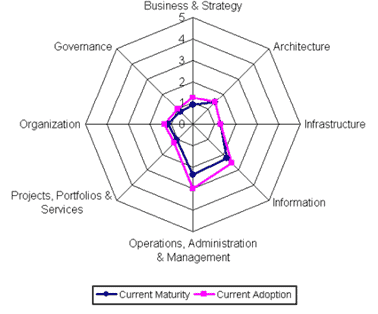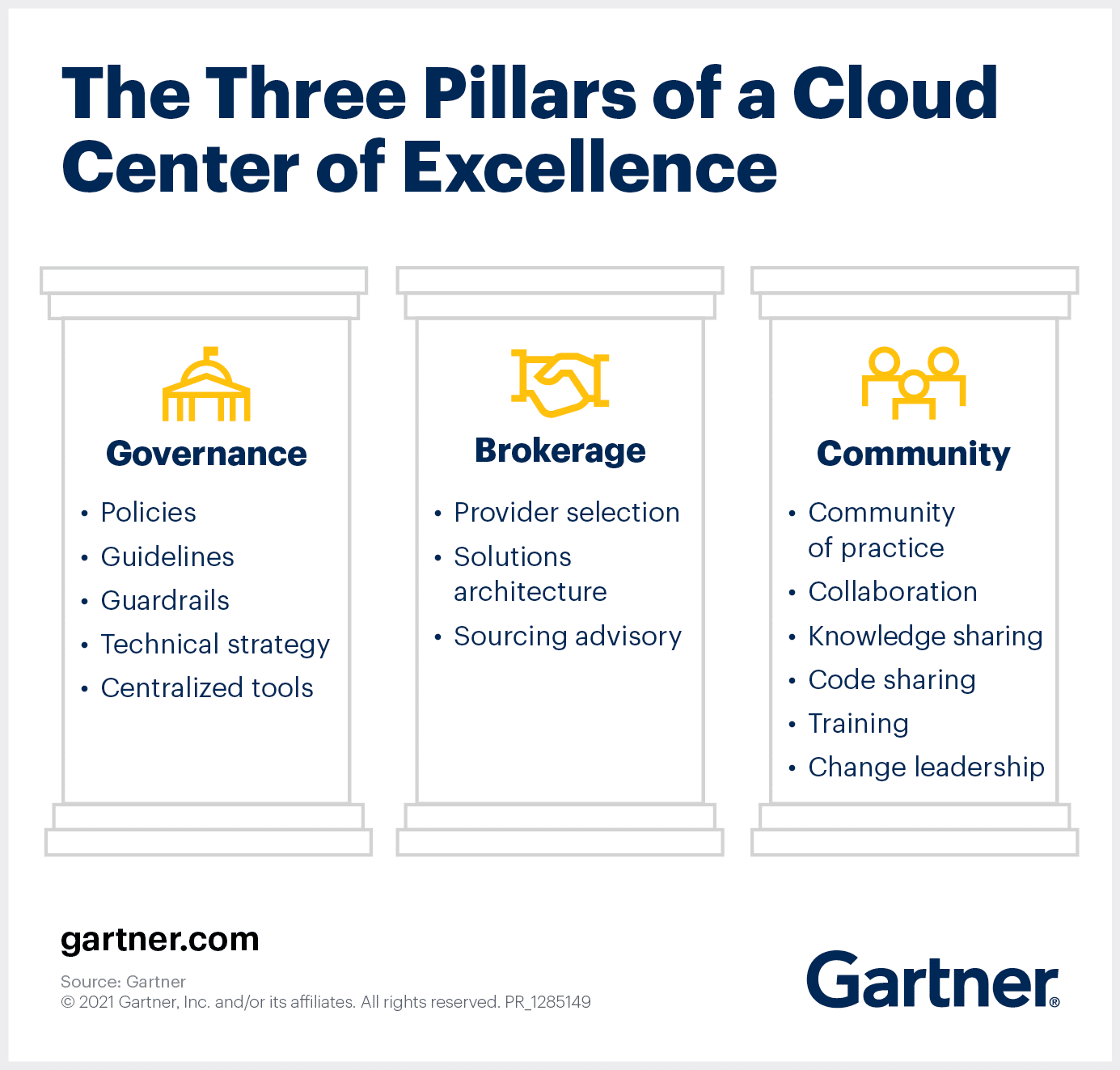Beyond Implementation: The Pathway to Cloud Success
Author: Pramod Alluri | | December 27, 2022
Migrating to or implementing a new cloud platform is a large project — but it is only the first step on the journey to successful cloud adoption. Once you are live in the cloud, your new set of priorities includes onboarding new resources, establishing and following cloud standards, and optimizing your cloud investment.
In light of these priorities, an important question arises: What does success look like? While a numerical measure of success may not be possible, there are many different methods, strategies, and approaches you can use to set yourself on the path to success. These methods include:
- Establishing a cloud center of excellence (CCoE)
- Advancing through the levels of the cloud maturity model
- Optimizing your cloud return on investment (ROI)
In this article, we’ll review each of these methods so you can evaluate where you are on the pathway to cloud success.
Establishing a Cloud Center of Excellence (CCoE)
“A cloud center of excellence is the best-practice approach to drive cloud-enabled transformation.” Gartner
To be successful in adopting the cloud, you must have the right team to help you make strategic decisions. The best way to organize this team is to create a cloud center of excellence (CCoE). A CCoE is composed of an organization’s executives, field operators, and department-level decision-makers. In addition, you can recruit a team of cloud assessors to measure and govern the progress of cloud adaptation and maturity.
The CCoE team leads the introduction of cloud computing capabilities to an organization. This team is responsible for the following granular-level activities.
- Championing the cloud transformation process
- Researching and planning logistics
- Guiding the transition
- Supporting and training employees
- Introducing required cloud frameworks
- Standardizing processes
- Helping employees overcome any barriers to cloud adoption
- Communicating clearly about any potential risks or issues
- Reviewing and reiterating any changes in the process for continuous improvement
- Aligning with the business objectives of the organization
Advancing Through the Levels of the Cloud Maturity Model
Cloud success is not an overnight achievement. It requires methodical and consistent effort until adoption is achieved across the organization. The cloud maturity model is a framework with six levels of cloud adoption that range from no cloud adoption to global, full-scale, multi-cloud, and multi-unit adoption. You can use this model to determine where you are on the cloud success pathway, and what you need to do to advance further.
Level One: Zero Implementation
There is no cloud implementation, and the potential capabilities are just hypothetical.
Level Two: Beta Resources
A beta team or project is established, and the theoretical cloud approach is tested on that single resource, group, or project.
Level Three: Deployment Across Teams
A cloud implementation project has been successful, and the cloud initiative has been deployed, measured, and tested across the entire function or team.
Level Four: Deployment Across Environments
To ensure organizational cloud success, the cloud initiative is then deployed across organizational divisions or shared servers and applications.
Level Five: Deployment Across Units
For large organizations that have multiple units across different geographical regions, the cloud can then be deployed across the entire unit.
Level Six: Deployment Across Clouds
Once the cloud initiative is operational for one unit, it can then be moved to the entire cloud ecosystem and introduced as a standard practice.
With these six levels, you can gradually mature your cloud practices and create successful cloud initiatives that will make an impact on your business goals.
Cloud maturity assessment with the spider graph of maturity and adaptation
To track and measure the success of your cloud implementation, you can track the maturity and adaptation of the cloud with the help of a spider chart. For instance, if you have implemented cloud infrastructure for governance, business strategy, data architecture, information and operations, and management, below is how your spider chart of adaptation and maturity might look:

Optimizing Your Cloud Return on Investment
According to a study, the main goal of 59% of European organizations is to cut costs by optimizing their current cloud usage.
Here are four steps you can take to ensure a maximum return on your cloud investment.
1. Standardize
The first step is to create standardized practices that applicable parties must follow when managing and interacting with your cloud infrastructure. These practices should be implemented across resource pools and ultimately the entire organization.
2. Train
As a second step, educate users about cloud practices, cloud capabilities, and the organization’s future business priorities. Ensure they understand how compliance with these standards will help them achieve future organizational and departmental goals. In addition, provide training on data governance and cloud usage parameters so your organization stays in compliance with applicable laws and stays under budget. Be aware of common post-implementation issues so you can address them in your training.
3. Measure
Once your cloud technology is established across the organization, it is now time to measure cloud maturity. Of all the cloud initiatives that you have created, you must measure which initiatives are performing, how they are performing, and how they tie back to the business goals that were established during the implementation.
4. Automate
The final stage of cloud optimization is cloud automation. The goal is to make every cloud initiative fast, efficient, and as hands-off as possible. This will not only optimize processes, but it will ensure that your resources can focus on productive work and increase the overall profitability of your organization.
It is All an Ongoing Process
It is not uncommon for cloud adoption efforts to sputter and stall on their way to success. Taking on-demand, elastic computing and converting it into concrete, measurable benefits to the business — and motivating all members of the organization to be the engine of those benefits — is a journey, not a race. You need to work consistently to create better measurements and goals that can be achieved with a mature and optimized cloud infrastructure.
Datavail recently helped a 600-million-dollar telecommunication equipment company execute a full cloud transformation. The company is one of the first in the nation to implement an updated and modern ERP Cloud platform foundation using Oracle’s complete suite of 52 cloud-native applications. Learn more about their astonishing transformation.
Related Posts
Amazon RDS vs Amazon EC2 | Amazon Web Services EC2 vs RDS
Ready to migrate your MySQL database to Amazon Web Services (AWS)? Which is better, Amazon RDS or Amazon EC2? Learn the pros and cons of each option.
Art of BI: What is Oracle Analytics Cloud and Why Should You Care?
Read on to learn about the release of Oracle Analytics Cloud, a service that includes Essbase Cloud, Business Intelligence Cloud, and more.
MongoDB and AWS- A Perfect Match
Amazon now supports MongoDB migration onto its AWS platform. Find out why MongoDB and Amazon S3 combination is a perfect match for the database infrastructure.




